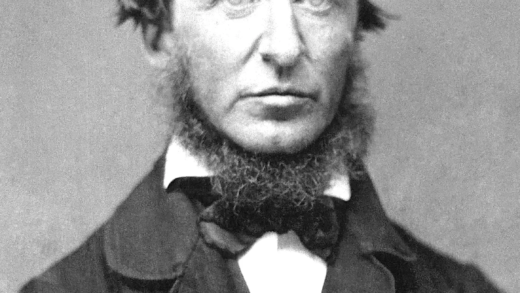This article explores the fascinating world of secondary colors, including their creation, emotional impacts, and usage in art and design. It discusses famous artworks featuring these colors, expert tips for mixing them, and how different hues can affect design outcomes. Readers will gain valuable insights into color theory and practical applications for their creative projects.
Understanding Secondary Colors: What Are They?
Secondary colors are the vibrant hues formed by mixing primary colors. These colors include purple, green, and orange. To create purple, mix red and blue. For green, combine blue and yellow. Orange is the result of mixing red and yellow. Understanding these combinations is crucial for artists and designers as it enhances their color palette and helps in creating visually appealing works.
Secondary colors play a significant role in art and design. They provide depth and contrast, making compositions more dynamic. When used effectively, secondary colors can evoke emotions and draw attention to specific elements in a piece. For example, purple can symbolize luxury and creativity, green often represents nature and tranquility, while orange can convey energy and enthusiasm.
How to Create Purple, Green, and Orange: The Basics
Creating secondary colors is straightforward and can be done with just a few primary colors. Here’s a simple guide:
- Purple: Mix equal parts of red and blue. Adjust the ratio to achieve different shades of purple.
- Green: Combine equal amounts of blue and yellow. Again, modifying the proportions can yield various greens.
- Orange: Mix red and yellow in equal parts. Play around with the balance to create lighter or darker oranges.
For best results, use quality paints or pigments. Experimenting on a palette before applying to your project helps in achieving the desired shades. Mixing colors isn’t just about combining; it’s also about understanding how colors interact with each other. Practice mixing in small batches to see how the colors evolve.
The Emotional Impact of Orange in Art
Orange is a powerful color that evokes a range of emotions. Often associated with warmth and enthusiasm, it can bring a sense of excitement to any artwork. In art, orange can stimulate feelings of creativity and joy. Its bright nature grabs attention, making it effective for focal points in a composition.
For instance, many artists use orange to create a sense of vibrancy in their work. It contrasts well with blues and purples, creating visual tension that can enhance the overall impact of the piece. Additionally, orange is often used in advertising and branding to convey friendliness and approachability, making it a popular choice in marketing materials.
In summary, understanding the emotional impact of colors like orange can significantly enhance artistic expression. When used thoughtfully, orange can transform a mundane piece into something that resonates with viewers on a deeper level.
Using Purple in Design: Tips and Tricks
Purple is a secondary color that brings a sense of sophistication and creativity to design. It can be a bold choice that stands out or a subtle shade that enhances other elements. Here are some effective ways to incorporate purple into your designs:
- Accent Color: Use purple as an accent color to draw attention to specific areas. It pairs beautifully with neutrals like white and grey.
- Color Gradients: Create gradients that include purple for a modern, sleek look. This technique works well in web design and branding.
- Textures and Patterns: Incorporate purple through textures or patterns. Think about purple florals or geometric shapes that can add depth.
- Lighting: Use purple lighting in spaces to set a mood. It can transform a dull room into a creative haven.
In essence, purple is versatile. It works in various contexts, from digital designs to physical spaces. Consider the emotional weight of purple—its association with luxury and imagination can elevate your work. Don’t hesitate to experiment with different shades to find what resonates best with your project.
Creative Ways to Incorporate Green into Projects
Green is a refreshing secondary color that symbolizes nature, growth, and tranquility. Incorporating green into projects can enhance visual appeal and create a calming atmosphere. Here are some creative methods:
- Natural Elements: Use real plants or green materials in your design. This can bring life and vibrancy to any space.
- Green Accents: Add green accents through furniture, artwork, or decor. Even small touches can make a significant impact.
- Color Blocking: Experiment with color blocking using green. Pair it with complementary colors like pink or orange for a bold statement.
- Eco-Friendly Materials: Choose eco-friendly materials in green tones. This not only looks good but also promotes sustainability.
Green is adaptable and can be used in various projects—whether in graphic design, interior decorating, or fashion. Its calming presence can help reduce stress and create a more inviting environment. Remember to balance green with other colors to maintain harmony in your designs.
Complementary Colors: What Pairs Well with Purple, Green, and Orange?
Understanding complementary colors is crucial for effective design. These are colors that enhance each other when used together. Here’s a breakdown of what pairs well with our secondary colors:
- Purple: Yellow is the complementary color to purple. This vibrant combination creates striking contrasts and can be used to highlight important elements in your design.
- Green: Red complements green, offering a bold and festive look. This pairing is often used in holiday themes and can evoke strong emotions.
- Orange: Blue is orange’s complementary color. Together, they create a dynamic duo that is eye-catching and energetic.
Utilizing complementary colors can elevate your design by adding depth and interest. When paired thoughtfully, these colors can lead to a visually cohesive and engaging composition. Be mindful of the balance between complementary colors to avoid overwhelming the viewer.
Famous Artworks Featuring Secondary Colors
Secondary colors like purple, green, and orange have been prominently featured in many renowned artworks. These colors are not just visually striking; they often carry significant emotional and thematic weight. For instance:
- Vincent van Gogh’s “Starry Night”: This masterpiece showcases swirling blues and vibrant yellows, but the presence of orange and green in the stars and hills adds depth and movement.
- Henri Matisse’s “The Dance”: Matisse uses bold oranges and greens to create a sense of joy and vitality, reflecting the energy of movement among the figures.
- Edvard Munch’s “The Dance of Life”: Here, orange represents passion and vitality, while green conveys a sense of nature and life, illustrating complex emotional themes.
- Pablo Picasso’s “Guernica”: While primarily monochromatic, the subtle uses of green and orange help to underscore the chaos and emotional impact of the piece.
These artworks illustrate the powerful role that secondary colors play in conveying emotions and enhancing visual interest. Artists often use these colors to create contrast and focus, guiding the viewer’s eye through the composition. Understanding how famous artists incorporate secondary colors can inspire your own creative projects.
Mixing Secondary Colors: Expert Tips
Mixing secondary colors effectively requires a bit of practice and understanding of color theory. Here are some expert tips to help you achieve the best results:
- Start with Quality Pigments: Invest in high-quality paints or pigments. They mix better and produce more vibrant colors.
- Use a Color Wheel: Familiarize yourself with the color wheel. It helps to visualize how colors interact and can guide you in mixing secondary colors.
- Experiment with Ratios: Don’t be afraid to play with the ratios of primary colors. Small adjustments can lead to significantly different shades of purple, green, and orange.
- Test on a Palette: Always test your mixtures on a separate palette before applying them to your main project. This allows you to see the true colors without risking your work.
- Consider Undertones: Different pigments have different undertones (cool vs. warm). This can affect the final color, so be mindful of the base colors you are mixing.
Mixing secondary colors can be a fun and rewarding experience. With practice, you’ll develop a better sense of how colors work together, allowing for more creativity in your projects.
Shades Matter: How Different Hues Affect Design
Understanding shades is crucial when working with secondary colors. Different hues can evoke varied emotions and responses in viewers. Here’s how shades can impact design:
- Light Shades: Lighter shades of secondary colors, like pastel purple or mint green, often convey a sense of calmness and tranquility. They are ideal for creating soothing spaces.
- Dark Shades: Darker hues, such as deep purple or forest green, can evoke feelings of sophistication and depth. These shades are often used in luxury branding and designs.
- Bright Shades: Vivid shades of orange and green can energize a space and create a sense of excitement. They are great for areas where you want to stimulate activity and creativity.
- Muted Shades: Muted tones can create a more subdued and harmonious atmosphere. They are often used in modern designs to create a minimalist aesthetic.
By considering the emotional effects of different shades, you can better tailor your designs to achieve the desired impact on your audience. Experimenting with various shades will enhance your understanding of how color can transform a space or artwork.





Comments are closed.